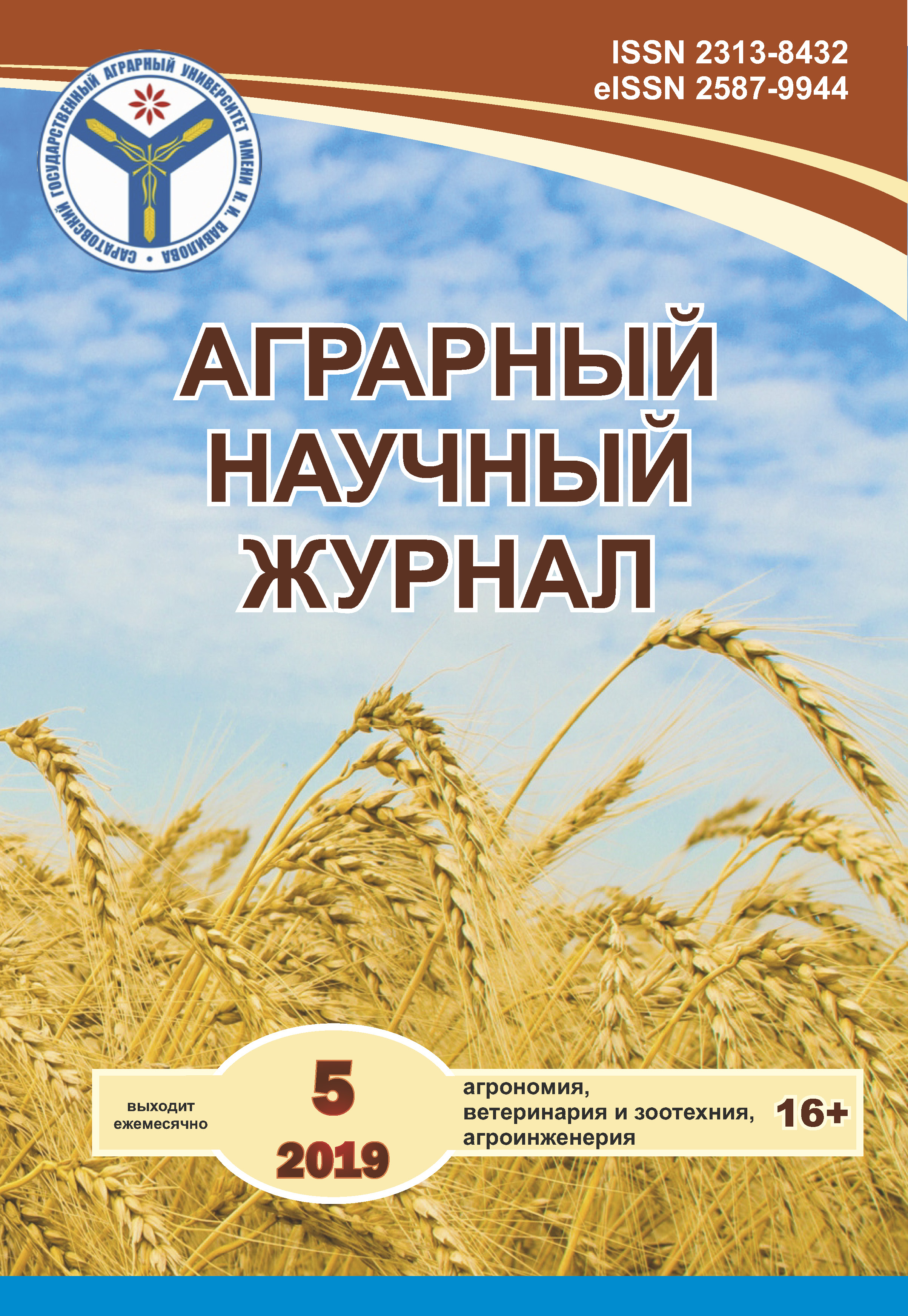Comparative evaluation of hybrids of improved T. sphaerococcum perc.
DOI:
https://doi.org/10.28983/asj.y2019i5pp50-53Keywords:
Sharada improved, T. sphaerococcum, soft wheat, hybridization, grain weight per spike, production indicatorsAbstract
The article presents the characteristics of the original T. sphaerococcum Perc. and its improved form, as well as the selected macromutant soft wheat. It was shown that macromutant soft wheat differed by a higher coefficient of specific productivity Kup (0.96), whereas there was practically no difference between improved (0.86) and initial Sharada (0.88). The mass of grain per spike of an improved form and macromutant soft wheat is 1/3 more than that of the original Sharada. It is associated with the influence of the third elementary diploid genome. The effect of different genotypes of soft wheat on the production indicators of improved Sharada varieties is assessed. To test the effect of soft wheat genotypes on the Sharada improved productivity, we crossed it with other forms of soft wheat. When hybridizing Sharada improved with samples of soft wheat, hybrid forms of soft wheat are more productive. It is established that higher productivity of soft wheat is inherited concatenated. Comparative analysis of hybrid forms of the combination: Sharada improved ? soft macromutant wheat showed that the superiority of the type of soft wheat by weight of grain per spike over the T. sphaerococcum Perc. is preserved. The crossing of Sharada improved with a closely related macromutant soft wheat did not significantly increase the production characteristics of the first. A slight increase in the grain mass per spike is observed in T. sphaerococcum Perc. when it is crossed with T.aestivum.
Downloads
References
2. Боровик А.Н. Селекция и возвращение в культуру исчезающих и редких видов пшеницы: шарозёрной (T.sphaerococcum Perc), полбы (T.dicoccum (Schrank.) Schubl.), твёрдой (T.durum Desf.), шарозёрной (Triticale shaerococcum) для деверсификации производства высококачественного зерна.: дисс. … д-ра с.-х. наук / Боровик Александр Николаевич. – Краснодар, 2016. – 49 с.
3. Липатова А.А., Садыгова М.К., Сергеев В.В. Технологический потенциал сортов яровой мягкой пшеницы селекции ФГБУ «Ершовская ОСОЗ НИИСХ Юго-Востока» // Аграрный научный журнал. – 2017. – № 7. – С. 13–18.
4. Пшеницы мира: видовой состав, достижения селекции, современные проблемы и исходный материал / под ред. В.Ф. Дорофеева. – 2-е изд. перераб. и доп. – Л., 1987. – 559 с.
5. Романов Б.В. Новая форма гексаплоидной пшеницы или полный гомолог Т. aestivum L. // Генетика – 1994. – Т. 30 (приложения). – С. 133.
6. Романов Б.В. Новая форма гексаплоидной пшеницы – гомолог Т.aestivum L. // Новые и нетрадиционные растения и перспективы их использования: труды III междунар. симпозиума. – Москва – Пущино, 1999. – Т. 2. – С. 409–411.
7. Романов Б.В. Тетраплоидный уровень проявления сложных количественных признаков у некоторых гексаплоидных видов пшеницы // С.-х. биология. Сер. Биология растений. – 2011. – № 5. – С. 31–39.
8. Романов Б.В. Введение в феномогеномику количественных признаков рода Triticum. – Персиановский, 2010. – 136 с.
9. Романов, Б.В., Пимонов К.И. Феномогеномика продукционных признаков видов пшеницы. – П. Персиановский, 2018. – 188 с.








